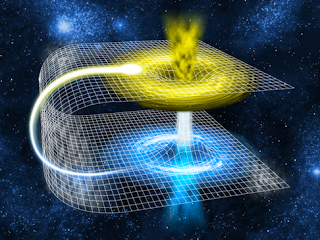Why did the scientist decline the opportunity to teleport?
Because he didn't want to molecularly disintegrate before his morning coffee!
 |
| Teleportation: Fact or Fiction |
The Idea/Imagination Behind Teleportation
Teleportation, the idea of instantly transporting matter from one location to another, has captured the imagination of people for many years. It has been depicted in science fiction films, books, and television shows as a way to travel quickly and easily, to move objects instantaneously, or to escape danger. The concept of teleportation has become so ingrained in our popular culture that it's easy to forget that it's still only a fictional concept, and one that may never be possible in the way it's portrayed in science fiction.
The Works Done on the concept of Teleportation
Despite its fictional origins, scientists and researchers have been exploring the concept of teleportation for many years, and there have been some promising developments in recent decades. One of the most significant breakthroughs in teleportation research is the development of quantum teleportation, which involves transferring the state of one quantum particle to another particle in a different location.
This form of teleportation does not involve moving matter from one place to another but rather transmitting information about the quantum state of a particle. This method has been demonstrated in the laboratory and has potential applications in quantum computing and cryptography.
Another area of research related to teleportation is the concept of wormholes, which are hypothetical tunnels that could connect two distant points in space-time. While the existence of wormholes has not been confirmed, some physicists believe that they could be possible according to the equations of general relativity. However, the technology required to create and control them is still beyond our current capabilities.
The Possibility and Science
Despite these promising developments, the concept of teleportation still faces significant challenges based on our current understanding of physics. One of the most significant challenges is the "no-cloning theorem," which states that it's impossible to create an exact copy of an unknown quantum state.
This means that true teleportation, in which matter is moved instantaneously from one location to another, is not possible according to our current understanding of physics. Even if we were to discover a way to transmit all of the information about an object's position, momentum, and energy state instantaneously, it would still violate the laws of physics as we currently understand them.
- There are also significant technical challenges to developing any form of teleportation technology. For example, quantum teleportation requires highly sensitive equipment and complex calculations, making it difficult to scale up to larger objects. The creation and control of wormholes would also require significant advances in our understanding of general relativity and the ability to manipulate space-time itself.
The End Notes
Teleportation, the idea of instantly transporting matter from one location to another, has been a popular concept in science fiction for many years. While there have been some promising developments in research on quantum teleportation and wormholes, the true form of teleportation as depicted in science fiction is not possible according to our current understanding of physics. Despite this, scientists and researchers continue to explore the possibilities of teleportation and its potential applications in quantum computing and cryptography.


0 Comments
Please share your views.